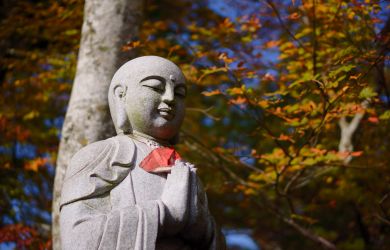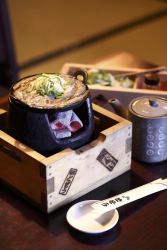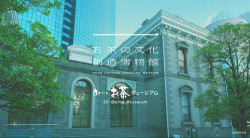
April 9, 2009
Marijuana Underground
Celebrity busts and student smokers have Japan's authorities in a tizz. But what do users make of Japan's ganja explosion? Shaun Davies delves into Tokyo's marijuana subculture to find the answer
By Metropolis
Originally published on metropolis.co.jp on April 2009

The pro-marijuana 420 Japan march in Tokyo in late February
Photo by Felicity Hughes
Japanese marijuana smokers have a sixth sense. Or at least, that’s what Takeshi* tells me as we sit in an increasingly smoky room in suburban Saitama, where a chunky, pungent joint is being passed from person to person.
“You don’t ask a person if they smoke. You just know. You’re a smoker and they come to you,” he says.
Takeshi rolls a mean joint, but that’s hardly surprising, as he’s been a smoker for 18 years. His friend Kenji’s not bad either. Both of them are in their 30s, hold down jobs, play sports and lead otherwise normal lives. They grow marijuana themselves, or otherwise access it through networks of friends.
“No one’s really selling it. Most people are just growing for themselves. They’re peaceful people and they just grow it and give it to their friends,” Takeshi says.
But after years flying beneath the radar, Japan’s marijuana underground is getting paranoid—and it’s not just the weed talking. High-profile cases involving celebrities, sports stars and university students have focused media and political attention squarely on what’s being portrayed as a marijuana boom.
“Now marijuana is big in the news because a lot of people are getting caught and everybody’s getting nervous,” Takeshi says. “Before it was kind of free but now the tension is getting bigger and we always feel kind of depressed. Everybody’s really uptight.”
Marijuana-related arrests soared in Japan last year—there were 3,793 in 2008, compared to 3,272 in 2007 and 1,670 in 1999. Four sumo wrestlers—three Russian and one Japanese—have been expelled for smoking grass in the past year, throwing the ancient sport into a crisis that claimed the scalp of the sumo association head Kitanoumi. At universities, including venerable institutions such as Waseda and Kyoto, students have been caught selling and smoking marijuana, mostly home-grown from seeds bought over the internet.
The apparent spike in marijuana usage has sparked a wave of warnings about the apocalyptic threat the drug poses to society. An email sent to Waseda students thundered that marijuana smokers “all too often end up physically and mentally ruined, perhaps leading lives of crime.”
“There is no ‘innocent’ or ‘harmless’ way to take illegal drugs. In Japan, possession alone is sufficient to lead to the most dire of social punishments. Engaging in drug-related activity is utter stupidity,” it read.
Newspaper editorials followed a similar line. Railing against the “cannabis pollution” sweeping the country, the Asahi Shimbun mounted arguments against those who wonder why marijuana is illegal, while tobacco and alcohol are not.
“Banned substances, including cannabis, are believed to act on the brain’s ‘reward center’ that produces the sense of satisfaction felt when one achieves something. In short, they act on what could be called the source of human vitality,” it said.<
But a significant number of young Japanese seem to be suspicious of this official hysteria, and a recent survey revealed that a majority of Waseda University students have no trouble accessing illegal drugs. So are we witnessing the emergence of Japan’s first stoner generation? And if we are, is that such a terrible thing?
You won’t see any Bob Marley posters on the wall of Hemp Restaurant Asa in Shimokitazawa. Its clean white surfaces are awash with ambient lighting, and the kitchen serves up macrobiotic food made from hemp-derived ingredients.
The restaurant’s owner, Koichi Maeda, is one of Japan’s best-known hemp activists, campaigning for the legalization of cannabis for both medical and commercial purposes. Now 58, he has written several well-received books, including Marijuana Seijun Ryokou (“Young Marijuana Holiday”), about his adventures smoking pot around the world. He also speaks Arabic, English and Korean. In fact, Maeda is as close as you get to a celebrity in Japan’s marijuana underground.
“I think marijuana use is becoming more widespread,” he says, “especially as more and more people go abroad and experience marijuana in the US or Southeast Asia.”
According to Maeda, most pot is grown in homes and distributed among networks of friends, rather than through organized crime gangs. He estimates that 2-3 million people smoke marijuana in Japan, although there are no hard figures to back this up.
“The police say marijuana becomes a source of profit for the yakuza, but marijuana smokers don’t like to have relations with the yakuza,” he says.
Maeda is big on the history of cannabis in Japan. Before the end of World War II, hemp was an important crop, and not because of any narcotic qualities. It was widely grown in the Japanese countryside and used to make rope, nets, clothes and other products. Even today, religious robes that the emperor wears during certain ceremonies are made from hemp.
But when the Americans rewrote Japan’s constitution after World War II, hemp was outlawed—which led to protests from local farmers.
“In the Diet, there was an argument about hemp control,” Maeda says. “Some members of parliament, especially from the agricultural areas, fought against the control because they were very poor at that time and needed the plant.
“In the end, hemp was allowed to be grown with a license, and about 20,000 were engaged at the time. But now only 200 growers have the license because it is very strictly regulated. It’s almost impossible to get one—you have to build a very high fence, over five meters high.”







